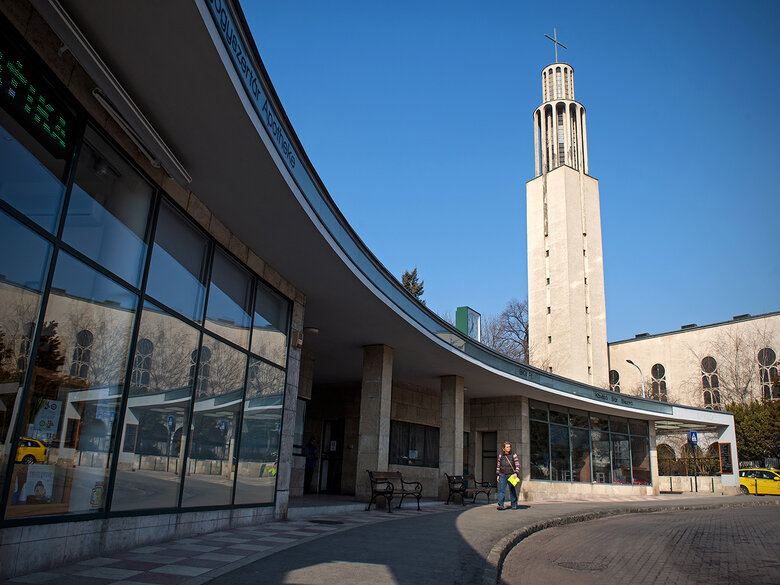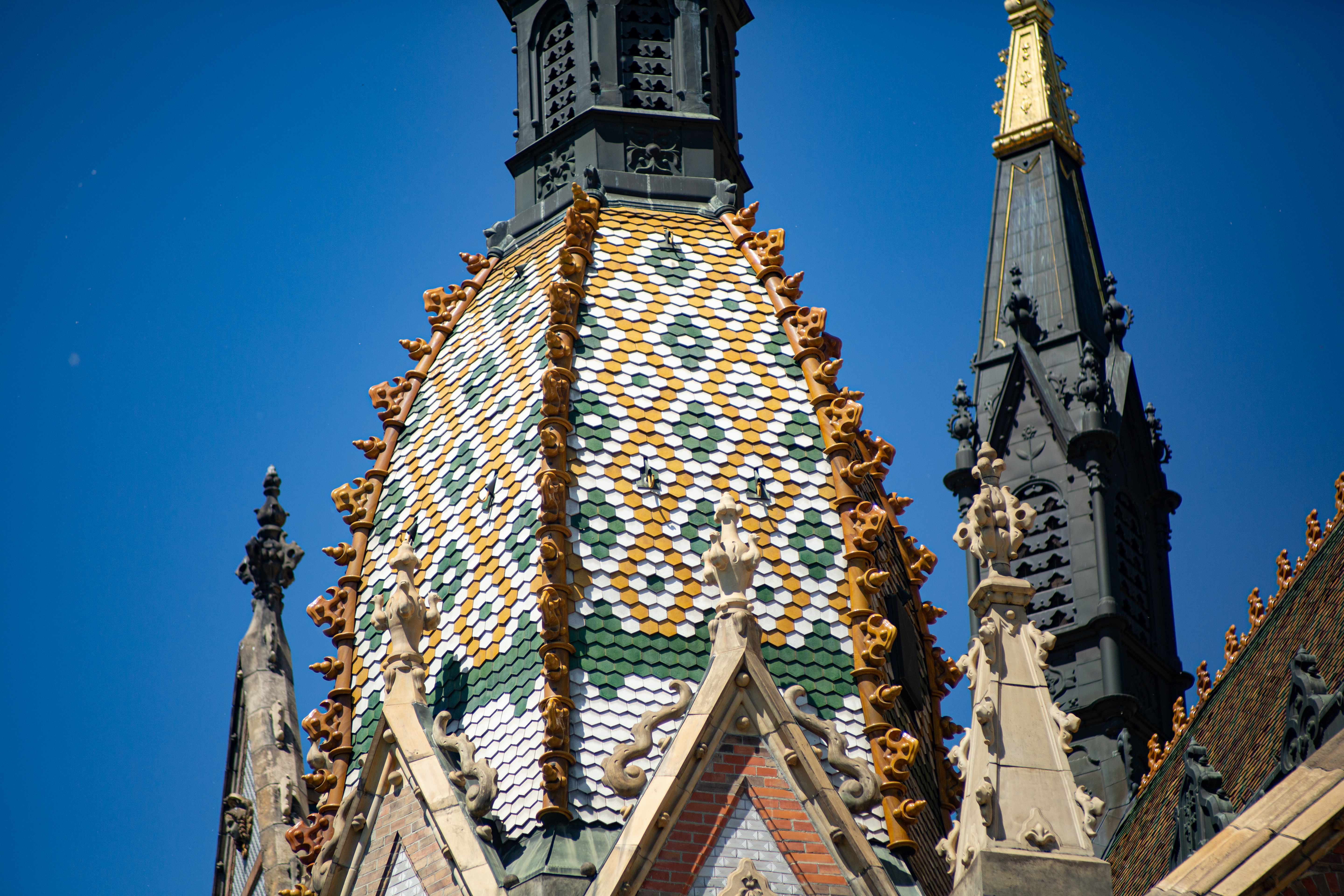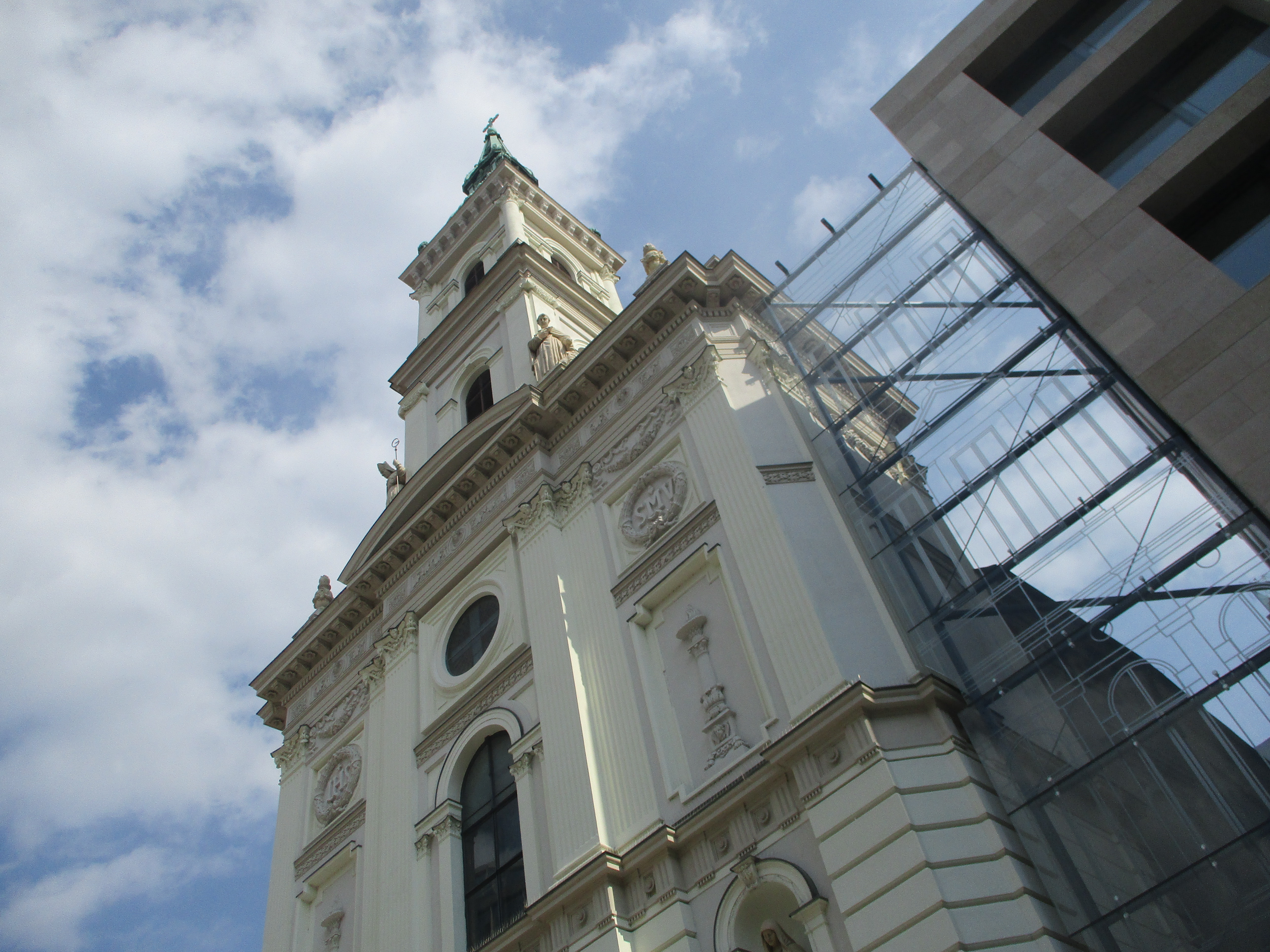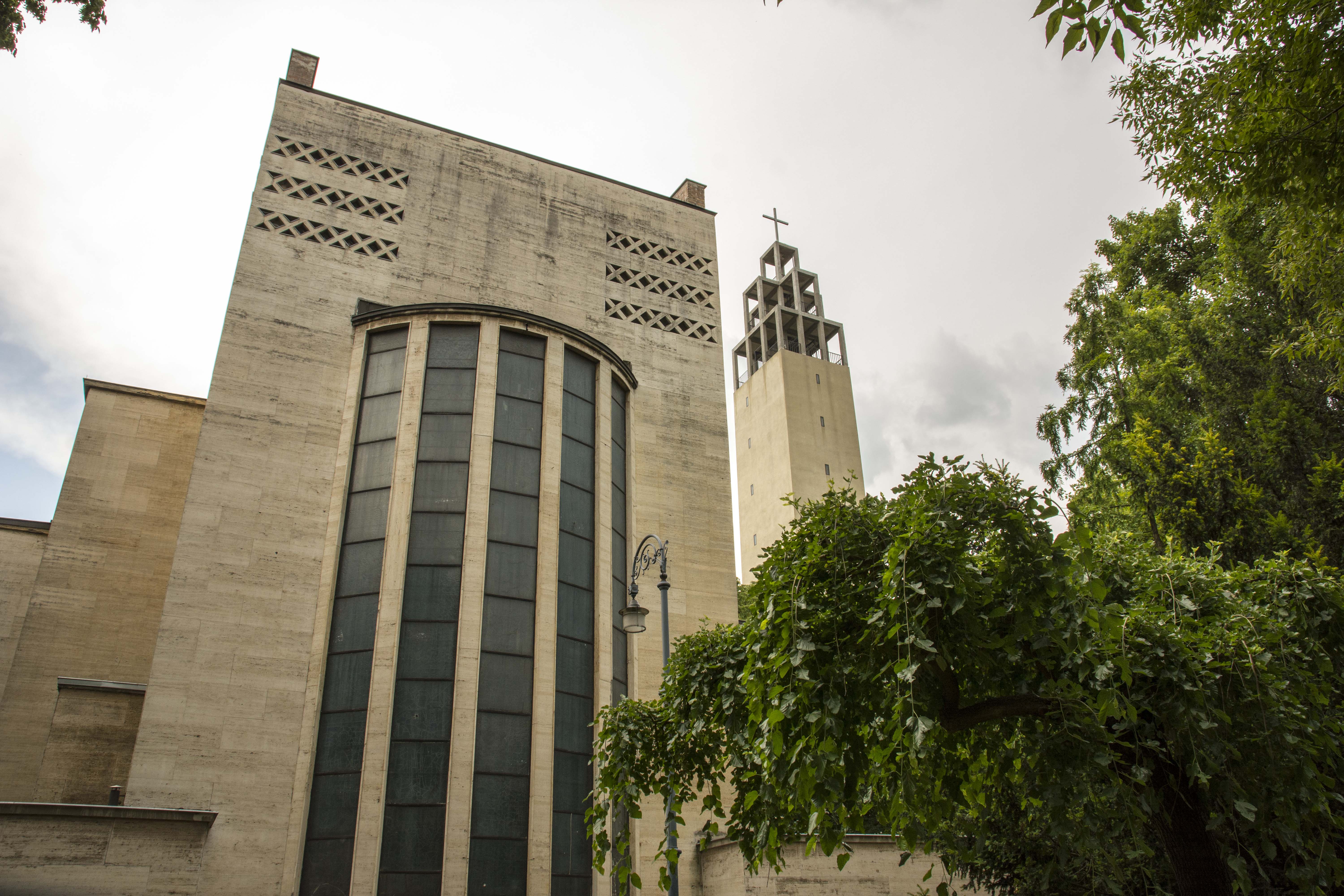1/10
Cave Church
The Cave Church of Our Lady of Hungary is
the most unusual in Budapest and belongs to the only Hungarian-founded order of
monks, the Paulines. The order was dissolved by Joseph II in 1786 together with
several others. The monks only returned home in 1934, when the Cave Monastery
was built for them on the Danube side of Gellért Hill, and the cavity formed by
a natural cave became a church. The idea came from Hungarian pilgrims visiting
Lourdes in 1924, and they wanted to build a domestic version of
the shrine here. Under Communism, the monks were sent away, the church was closed,
the monastery later became a dormitory of the State Ballet Institute, not reopened until 1989. Between steep cliffs, they not only hold Mass but also act as a visitor centre, preserving one of the most valuable relics of
the Pauline Order, the shin of St Paul the Hermit.
5/10
Inner City Parish Church
Urban myth
has it this church had
to be pushed to one side during the construction of Elizabeth Bridge,
but this is not the only strange thing about its architecture: one of the
oldest and richest historical buildings in Budapest has been redesigned 14
times. The crypt has been open to the public since 2017 and can be seen through
the glass floor – it goes all the way back to Roman times, as the first church
was erected on the walls of a former garrison in the 11th century. Below, you
can also see an exhibition of archaeological excavations, the new chapel
serving as a community and prayer space, and the Proberger crypt, built in
1699, in which 19th-century aristocrats rest, as well as Bishop Gellért (as
in Gellért Hill). It
was later used by the Turks as a mosque. The structure you see today dates back to the 16th century, with
Baroque touches added after an 18th-century fire. It was later restored by
architectural giant Imre Steindl, who designed Parliament. In 2020, both towers
were also opened to the public, providing stunning views over the city.
6/10
Matthias Church
This impressive landmark that dominates the
top of Castle Hill alongside Buda Palace owes its Gothic look to a painstaking
makeover by Frigyes
Schulek and its distinctive bright roof tiles to the famous Zsolnay factory in Pécs.
The Church of Our Lady, known as Matthias Church (Mátyás-templom) after
the Renaissance king who held his two weddings there, dates back to 1015,
shortly after the country's conversion to the Christian faith. It was rebuilt
in Gothic style in the 14th century, before being converted into a mosque
by the invading Ottomans in the 1500s. It then gained a Baroque transformation
before Schulek went back to the original medieval plans to restore it as
Matthias would have known it. Shortly afterwards, in 1916, the last king of
Hungary, Karl I, was crowned here. Like so much of Buda, the church suffered
significant damage during World War II. Restoration was slow. Thanks to
its latest reconstruction between 2006-2013, it now stands in its
old glory again. You can also climb its lace-like
southern tower, via the 197 steps of a spiral staircase, to gain
views of its enormous bells and weather vane, as well as the landmarks of Budapest.
8/10
St Stephen’s Basilica
St
Stephen’s Basilica is the largest church in Budapest. Planning and construction
took 54 years, involving three chief architects and the collapse of the entire
dome nearly two decades into the project. It was around this time that Miklós
Ybl of Opera House fame took over the reins, though his death in 1891 meant
that József Kauser saw the Basilica through to its completion. Deliberately
designed to reach an exact height of 96 metres, the same as Parliament, the Basilica wasn’t
ready for the 1896 Hungarian Millennial celebrations, only seeing the light of
day in 1905. Today, accommodating 8,000 worshippers, characterised by rich
ornamentation and huge windows radiating light and dignity, it provides a
suitable setting for state funerals. The public can observe the somewhat
macabre sight of the preserved right hand, the Holy Dexter, of Hungary’s first
king, St Stephen, kept as a relic in the main aisle. While one lift takes you to the treasury, the other
goes up to the dome, with marvellous views over the city. The Basilica also
hosts recitals and concerts.











